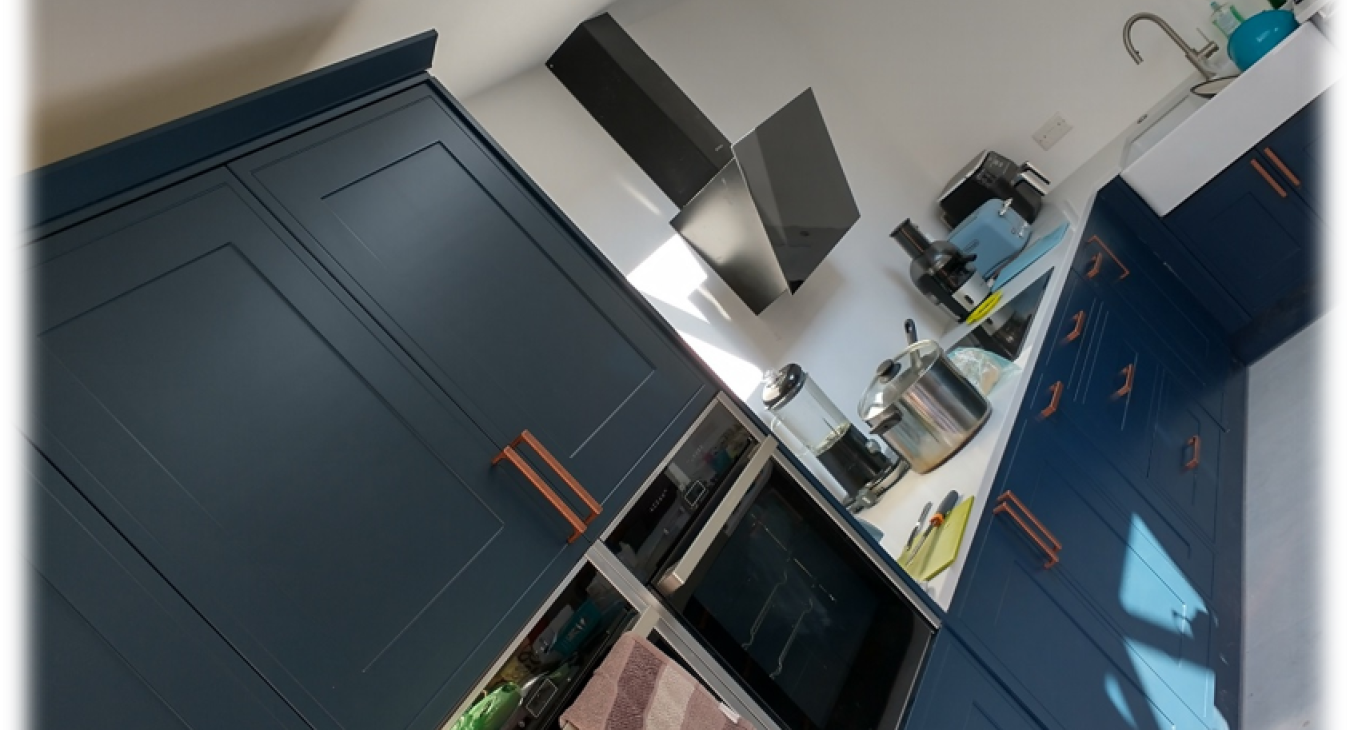What Causes Condensation in the Home?
Do you wake up of a morning and open the curtains to steamy windows you can't even see out of? Especially in the winter? And what about those ever-growing mould spots that are appearing on the window frames, walls and ceilings? Would you like to find out how you might be able to fix all of that with extractor fans and PIVs?
You've come to the right place. Lets first start with learning how condensation comes to us in the form of wet steamy windows every morning.
- Poor Ventilation Stagnant indoor air allows humidity levels to rise. Poor ventilation means moist air cannot escape at an equal rate to the moisture being produced inside the home. This causes humidity build up over time. Ensuring adequate air exchange through fans, open windows, or ventilation systems is key to controlling indoor moisture levels.
- High Moisture Generation Cooking, bathing, cleaning, even our breath, and other activities add a lot of water vapor to the air. The average family of 4 can produce up to 12 pounds of moisture per day through breathing, showering, cooking, laundry and more. Managing this substantial moisture generation requires proper ventilation.
- Insufficient Insulation Uninsulated exterior walls are cooler, causing condensation. When warm indoor air contacts cool external walls and surfaces, the temperature differential causes moisture to condense and turn into water, creating condensation. Proper insulation creates a thermal barrier that prevents this temperature clash.
- Cold Spots Areas with poor air circulation and colder surfaces like windows are prone to condensation. Stagnant air pockets near cold surfaces allow moisture accumulation. Improving air flow patterns and adding insulation helps address cold spots.
- Weather and Season Cool, damp outdoor air entering the home can cause condensation. This is most common in winter. In cold weather when homes are all sealed up, the infiltration of chilly external air introduces more moisture that can lead to condensation on surfaces.
- Number of Occupants More people means more moisture generation through breathing, cooking, showering, etc. The average person produces 0.5 gallons of perspiration and respiration per day. More occupants results in exponential increases in indoor moisture. Proper ventilation must match household size.
Where Does Condensation Occur Most Frequently in the Home?
- Bathrooms Hot baths and showers produce steam which condenses on walls, mirrors, windows and other surfaces. Bathrooms need effective, humidity-controlled extractor fans. The hot steam from baths and showers introduces substantial moisture into the bathroom air very quickly. Without proper ventilation, this moisture laden air is able to stagnate and has all the time in the world to condense on all the bathroom surfaces, which leads to mould, mildew and damage over time.
- Kitchens Cooking with pots of boiling water adds a lot of warm, moisture laden vapor to the air which can condense. Range hood ventilation over cooktops is essential. Boiling, simmering, baking and other cooking generates significant water vapor. Kitchen extractor fans draws this moisture away before it can condense on cabinets, walls and windows.
- Bedrooms Natural humidity from occupants breathing can lead to window condensation. Background ventilation is important. While less moisture than bathrooms and kitchens, bedrooms still generate humidity from occupants breathing and perspiring at night. Keeping some ventilation active helps control condensation on cool bedroom windows.
- Attics and Basements Unfinished spaces allow moist indoor air to contact cold exterior walls and unfinished floors. Insulation and air sealing helps. Attics and basements often lack insulation, allowing warm interior air to hit cold exterior walls and surfaces leading to condensation. Basements tend to get a double whammy because they are literally surrounded by damp, cold, potentially water-saturated earth, almost creating a constant quasi-submersion. Insulation and sealing air leaks helps minimize this moisture issue.
- Windows The air right near the glass is cooler, causing moisture to accumulate. This is most visible in winter and appears as 'steamed-up' windows and water droplets. Glass has a fairly low insulation value, making windows much colder than surrounding walls and interior air. This temperature difference causes moisture to accumulate visibly on the glass.
- Outside Walls When warm household air touches the especially colder exterior walls, surface condensation results. Insulation is key. Any uninsulated exterior walls can suffer from condensation issues when humid indoor air contacts the cold masonry. Insulation provides a thermal break to prevent this temperature clash.
Health and Home Risks of Too Much Condensation
- Mould Growth Wet conditions catalyse mould growth which releases airborne allergens. Prolonged moisture allows mould spores to rapidly multiply, colonizing surfaces and releasing allergens into the air when disturbed. This can trigger allergic reactions, congestion, and asthma attacks.
- Bacteria Build up Damp areas breed bacteria that can cause infections. Persistent wetness enables bacteria like staphylococcus and streptococcus to proliferate, increasing the risk of skin infections and illness from contaminated surfaces.
- Dust Mites Humid air encourages dust mites which are strong asthma triggers. Dust mites thrive in humid conditions above 50% relative humidity. Their faeces and decomposing bodies contain allergens and can exacerbate asthma and allergic responses.
- Peeling Paint and Plaster Moisture behind walls causes surfaces to bubble and peel. Trapped moisture in wall cavities exerts pressure on paint and plaster, forcing it to detach in bubbles and strips. This looks unsightly and accelerates deterioration.
- Powdering Plaster Excessive moisture content in wall plaster, over a period of time, will start to cause the plaster to disintegrate on the surface, creating a powdery layer which fall off by itself over time, and by touching it.
- Rotting Wood Wet wood in window frames, trim and structures decays and weakens over time. Prolonged moisture causes wood fibers to break down, compromising strength and leading to fungal rot over time.
- Rust Formation Metals corrode rapidly in damp conditions. Indoor moisture accelerates oxidation of metals like iron, steel and copper. This corrodes and damages fixtures, pipes and structural components. Osmosis of this water content can mean create a rust coloured stain mark around the offending article.
- Damaged Insulation Wet insulation loses R-value and efficiency. Moisture saturates insulation, dramatically reducing its insulating performance and allowing more condensation. This worsens the cycle of dampness.
- Structural Issues Moisture seeping into walls can compromise stability long-term. Excess moisture in framing lumber causes swelling, warping, rotting and encourages mould. This deteriorates the structural integrity of the home over time.
- Respiratory Issues Inhaling mould spores and mildew can cause congestion, asthma attacks, and allergic responses. Microscopic spores irritate airways and trigger allergic reactions leading to coughing, wheezing, shortness of breath, nasal congestion, and worsened asthma.
Solutions for Condensation: Extractor Fans & Positive Input Ventilation
- Extractor Fans Extractor fans, also called exhaust fans, are designed to rapidly pull humid air out of a room, and expel it outside the building. They are commonly installed in kitchens, bathrooms and other moisture-prone areas. By actively venting out steam, cooker smoke and damp air, extractor fans significantly reduce condensation buildup. Extractor fans create a negative pressure that actively draws air and moisture out of the room. This localized extraction helps control humidity at the source before it can spread and condense on surfaces.
- Types of Extractor Fans
- Wall-mounted - Mounted on exterior walls. Less visible but may transmit some noise.
- Ceiling-mounted - Mounted centrally on ceiling. More discreet but requires attic access.
- Window-mounted - Mounted on the window. Because of the properties of glass, we reserve this recommendation unless solutions have been exhausted and it is absolutely necessary.
- Inline duct fans - Mounted remotely with ducting routed to area. These are our favourite types of fans and are absolutely our go-to unless it is completely impractical to fit them. Less visible but needs ductwork.
- Key Benefits of Extractor Fans
- Actively remove humid air - Don't just rely on passive ventilation. Powerful extraction, and can come with features such as timers, humidistats, continuous - running, and boost functions.
- Rapid moisture extraction - You can achieve powerful airflow rates of extraction, provided a suitable extractor is selected and the entire extraction system is installed correctly.
- Flexible installation - Wall, ceiling or in-line fans means there's nearly always a practical solution.
- Localized ventilation - When installed right, extractor fans can remove moisture from the air at the point it is created - Getting to the root cause of condensation, damp & mould.
- Energy-efficient operation - You will probably be surprised to hear, most fans really are LOW POWER! And generally have a power rating of a traditional 40 Watt light bulb, and more often than not, much less.
- Improved air quality - Extractor fans help to remove cooking fumes, Volatile Organic Compounds ( VOCs), and other pollutants from the inside of your property.
- Positive Input Ventilation (PIV) Rather than extracting moisture-laden air out, positive input ventilation systems supply fresh, dry air into the home. This helps control condensation whilst improving overall air quality. PIV units bring in fresh outdoor air which helps to push stale air out, promoting fresh air ventilation. PIV units draw outdoor air, typically from the loft, filters the air, and delivers it into the home's problem areas via ducts and vents. For standard size properties in the UK, you may well only need one inline fan and one vent on the landing ceiling to achieve stopping condensation, damp & mould right in its tracks.
- Types of Positive Input Ventilation (PIV) systems
- Central PIV Units - Larger units installed in attics or crawlspaces that connect to ductwork to distribute fresh air throughout the home.
- Decentralised PIV - Smaller units mounted directly in individual rooms or problem areas rather than central distribution. For most standard size properties in the UK, this is the best solution for removing condensation and its resulting damp & mould issues, and this is what we at Techmeisters Ltd specialise in.
- Heated PIV - Some PIVs incorporate a heater element which warms the fresh air from outside up to the right temperature before it is pumped into the property for extra comfort and convenience. Again, we specialise in the decentralised versions of these types of PIVs
- Mechanical Ventilation Heat Recovery (MVHR) Systems - Heat recovery ventilation units that recovers warmth from warm moisture-laden air it is extracting and transfers this warmth to warmth to incoming fresh air. Also known as Heat Recovery Ventilation (HRV) systems.
- Key Benefits of PIV systems
- PIVs lower indoor humidity - A PIVs sole purpose is to push fresh, dry air into the property, which naturally pushes the air existing inside the property - which has naturally absorbed some moisture generated by day to day living and breathing activities - out of the property.
- Cleaner air quality - PIVs are a great opportunity to remove pollen and other particles for cleaner air quality, before it gets pumped into the property. The air filter in the PIV system traps allergens and dust.
- Whole-home ventilation - PIVs are surprisingly good at what they do to stop condensation. One decentralised PIV alone can be the right solution for a small family comprising of 2 adults and small children.
- Flexible installation - We have a wide range of PIVs to choose from, including loft, wall, ceiling or ducted PIV units. PIVs can also have different features and adaptable configurations. We recommend loft PIVs because they bring slightly warm air in from the outside by virtue of heat rising into the loft of properties, which means the air there is already slightly warmer than from directly outside.
- Energy-efficient ventilation - PIVs use around as much energy as extractor fans, possibly a little bit more. The nature of MVHR generally use less power than AC or dehumidifiers, and some models both extract and actually recuperates warmth from the outgoing air into the incoming air. Effectively, that means you spend less on gas trying to warm the new fresh air up!
- Low maintenance - PIVs in particular are only interacting with fresh air, and not moisture laden air, like their extractor fan counterparts, PIV maintenance in this case will mostly consist of just replacing the air filter from time to time.
Choosing the Right Condensation Solution for Your Home
- Existing Ventilation If you lack any fans or PIV equipment currently, condensation is likely a big problem for any modern day UK family. Homes without existing ventilation have likely accumulated substantial moisture issues over time, especially in the energy crisis last winter. Without adequate air exchange, Condensation and humidity problems is to some degree prevalent in most unventilated homes.
- Budget PIV systems can have a higher upfront cost than individual extractor fans. Factor in your budget constraints. While very effective, whole-home PIV units are a major investment with installation costs typically ranging from £2000 to £5000. Individual decentralised PIVs and all types of extractor fans provide a more affordable solution between £350 to £600 per fan installed from scratch.
- Problem Areas If condensation and humidity are localized to high-moisture creating areas such as kitchens and bathrooms, extractor fans in these areas may be the simplest fix.
- Whole-Home Issues For persistent condensation, damp and mould problems that are affecting (typically) all upstairs rooms, on ceilings, walls and around windows, a PIV on the landing might be the better option. For overall humidity and stale air, a centralized PIV unit is more effective at addressing the widespread humidity and air quality issues.
- DIY Installation Handy homeowners may opt for self-installed extractor fans which are simpler. Basic extractor fans and PIVs can be installed DIY by competent homeowners. Do keep in mind that rooms containing a bath or shower are classed as special locations in the UK building regulations, and do require an NICEIC registered electrician to work on electrics in these rooms, and also generate the applicable certificates and notification to building control.
How to Install Kitchen & Bathroom Extractor Fans
- Pick Mounting Location Pick a suitable mounting location on the wall or ceiling away from obstructions. Ceiling fans are less noticeable visually. Vents for in-line fans even more so. Choose a location with clearance for the fan size and optimal room coverage for air extraction. Wall mounts are more visible but may simplify ducting. Please remember to look at your ceiling and walls (ceilings especially) for signs of asbestos containing materials, such as texted coating (artex).If in doubt, get the ceiling tested. If there is a loft space above the room in question, we'll always try to push the benefits on an inline extractor fan purely because of its advantages over its counterparts.
- Choose An Appropriate Fan Select an extractor fan designed for the specific demands of the kitchen or bathroom. You need to thin about whether the fan in wall or ceiling mounted, whether you'd like a timer to keep the fan on for longer, whether you want an automatic humidity reduction sensor built in, what colour, style and size you'd like (keep in mind there is a trade-off between size, noise, and air extraction rates).
- Cut Hole for Fan Housing / vent Cut an appropriately sized hole for the fan housing. For wall mounted, cut into the wall with a coring set for brick, or a hole saw for plasterboard and timber. For ceiling mounted, cut into drywall or plaster. Use the fan dimensions to trace and cut a hole allowing some clearance all around the housing. Cut carefully to avoid bigger repairs.
- Run Wiring to Fan Hole Run wiring from the switch location and possibly permanent feed to the cut-out fan hole. Read the Manufacturers Instructions (MIs) and follow them with regards to the electrical part of the installation (and the rest of the installation). On top of this, ensure you use the correct cable for the job which is suitably protected against overcurrent and electric shock risks. If in doubt, call your friendly local NICEIC registered electrician.
- Mount The Fan Assembly Mount the fan assembly securely into the hole. For ceiling models, install mounting brackets. Insert the fan into the housing hole and fasten it into place using screws, brackets or integrated mounting features. For brick walls, you'll want to use rawl plugs and screws. For plasterboard walls, you may want to use self tapping plasterboard fixing screws
- Install and attach Ducting Attach ducting from the fan's outlet to a nearby exterior vent hood with duct tape and zip ties. Run ducting to the nearest external roof or wall vent. For long runs, don't introduce sharp bends into the ducting route, and for stretchy ducting keep it as taut as possible. For lofts, insulate the ducting to reduce moisture build up and water collection inside the ducting from condensation, and in order to make sure the water, if it does collect, runs outside and not back inside, you have got to do this: Near the point where the warm moisture laden air is being extractor from inside the property, you need to increase the height of the ducting by approximately 100mm per meter of ducting length, and support it along its length to create a slightly fall toward the external duct.
- Connect Wiring Ensure you have isolated the supply to the part of the electrical installation you are working on. Connect the wiring to the fan's integrally mounted junction box. Ensure proper earthing and polarity. Follow the wiring diagram to connect live, neutral and earth wires correctly using proper connectors. (don't just chop the earths back! And use earth sleeving!).
- Attach Grille Cover Attach fan grille cover and any optional backdraft dampers or terminators. Install the decorative grille cover once all internal work is complete. Add backdraft dampers if not already integrated.
- Test Operation Turn on power and test operation, airflow and any humidity sensors. Verify proper airflow, fan speeds, and that any humidity sensors activate as expected before completing installation.
Installing Simple Positive Input Ventilation Systems
- Survey Home Layout Survey home layout and condensation problem areas to plan ideal PIV unit location - usually in the loft or sometimes externally. Examine the home's layout and problem rooms to determine the best location for the PIV unit for efficient ducting runs.
- Select Appropriate PIV Unit Select an appropriate CFM-rated PIV model based on home size and number of bedrooms. Larger homes require more air circulation. Choose a PIV unit with the recommended CFM rating and features for your home's square footage and number of bedrooms. Remember there are different types of PIV that may have extra features.
- Cut Hole for the PIV housing / vent Cut an appropriately sized hole for the fan housing. For wall mounted, cut into the wall with a coring set for brick, or a hole saw for plasterboard and timber. For ceiling mounted, cut into drywall or plaster. Use the fan dimensions to trace and cut a hole allowing some clearance all around the housing. Cut carefully to avoid bigger repairs.
- Mount PIV Unit Mount the main PIV unit in the desired location. Securely mount the PIV unit to walls or floor using included hardware. In the loft you may have to build stud work to accommodate the PIV.
- Install Ducting Install ducting, ensuring exterior vents have insect screens. Secure the ducting with duct tape and zip ties.
- Install PIV Vents Install wall or ceiling vents in the target rooms directing air flow away from walls. Mount diffuser vents on walls/ceilings with directional fins pointed away from exterior walls. There are a number of colours, shapes and styles to choose from if one isn't included.
- Run Wiring to PIV Run wiring from the switch location and possibly permanent feed to the PIV. Read the Manufacturers Instructions (MIs) and follow them with regards to the electrical part of the installation (and the rest of the installation). On top of this, ensure you use the correct cable for the job which is suitably protected against overcurrent and electric shock risks. If in doubt, call your friendly local NICEIC registered electrician.
- Connect Wiring Ensure you have isolated the supply to the part of the electrical installation you are working on. Connect the wiring to the PIV's integrally mounted junction box. Ensure proper earthing and polarity. Follow the wiring diagram to connect live, neutral and earth wires correctly using proper connectors. (don't just chop the earths back! And use earth sleeving!).
- Test Operation Turn on power and test operation, airflow and any humidity sensors. Verify proper airflow, fan speeds, and that any humidity sensors activate as expected before completing installation.
Ongoing Extractor Fan & PIV Maintenance Tips
Extractor fans will have to deal with moisture-laden air, which dust loves to stick to - it then lands on the fan blades and the ducting and can create a substantial dust lining relatively quickly. Extractor fans should be maintained at least every 12 months, or more frequently if the MIs dictate so. For the purposes of this part - Manufacturers Instructions may well dictate the minimum intervals for servicing the equipment.
- Clean Fan Blades and Grilles Dust build-up reduces airflow. Wipe down with damp cloth. Cleaning the fan blades and grilles regularly maintains maximum airflow and efficiency. Carefully wipe down all accessible surfaces. For extractors you need to performing this every 12 months, and for PIVs every 24 months.
- Check Filters PIV and some extractor fans have filters that need replacing every 12-24 months. to maintain air quality and proper airflow without restriction. Clogged filters reduce system performance.
- Remove Lint and Debris Clean ducting to remove built-up lint restricting airflow. Accumulated debris in ductwork can impede air movement. Clean ducts to restore full airflow. Again do this every 12 months for extractor fans and every 24 months for PIVs.
- Verify Backdraft Dampers Function Dampers should open during fan operation. Test that backdraft dampers open when the fan is on and close when off to prevent air leaks, and that they aren't getting blown open in high winds, or getting stuck open. Maintain, repair or replace if not working properly.
- Clean Exterior Hoods Ensure outdoor hoods aren't blocked by leaves or dirt. Outdoor vent hoods should be cleared of any debris that could obstruct airflow. A clean hood improves ventilation.
- Check All Connections Reseal any leaky or disconnected duct joints. Air leaks reduce system efficiency. Re-tape and seal any leaky connections.
- Confirm Humidity Sensor Operation Replace old humidity-sensing switches that are inaccurate or defective. Humidity sensors activate fans when moisture is high. Replace faulty ones promptly.
- Test Airflows Use an anemometer annually to check fan CFM levels. Verify fan airflows haven't decreased from dirt buildup or wear using an anemometer.
- Listen for Unusual Noise Lubricate or replace worn out, noisy motor bearings. Listen for odd noises and reposition or lubricate/replace parts as needed to keep fans quiet.
Conclusion
Condensation causes more than just steamy windows in the morning. Excess indoor humidity fosters damp, mould, bacteria, pests, and long-term structural damage if left unchecked. Installing properly position and specified extractor fans in kitchens, bathrooms and other wet areas provides targeted ventilation right where you need it most. For whole-home air quality and humidity control, positive input ventilation delivers filtered, fresh air 24/7. As your local team of NICEIC registered electricians, experienced in all aspects of home ventilation, we're here to help analyse your condensation problems and specify the best solutions. Contact us today to discuss how we can design an effective ventilation plan to finally resolve dampness and create a healthier indoor environment.
Why Choose You Friendly Local NICEIC Electricians Serving Medway & Maidstone for Your Ventilation Project?
When condensation, damp & mould is compromising your property's health and comfort, our experienced local electricians are here to help. We've managed to specialise in this field and know the building game well, so even if we aren't able to help you fix the issues you face - we'll certainly be able to put you in touch with someone who can!
Benefits of choosing our services:
- NICEIC Registered: We are professionally registered with the Nation Inspection Council for Electrical Installation Contracting (NICEIC). This is the gold standard of professional registration and requires us to keep on top of our game. The NICEIC audits us and our work annually, with a high standard to meet in order to keep our NICEIC registered status.
- Fully Insured: Not only do well hold all relevant insurances, we go above and beyond with our £5 Million public liability policy, not only this, but the NICEIC trusts our workmanship so much they back it with their platinum promise which is a 6 year guarantee.
- Customer Satisfaction Guaranteed: We turn up when we say we will. We're friendly, polite & approachable. We do a good job and we tidy up after ourselves. If there are any problems, we'll be back. We are the #1 low risk option for our clients in Medway & Maidstone.
If you'd like to find out more about the benefits of awarding work to NICEIC electrical contractors, please see our entire blog dedicated to the subject












